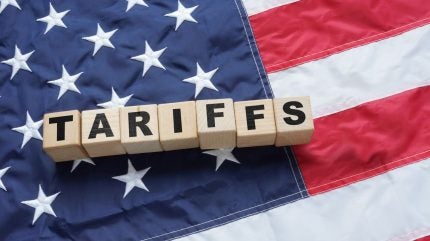January US apparel imports surged as firms overstocked to navigate tariffs

JANUARY US APPAREL IMPORTS SURGED AS FIRMS OVERSTOCKED TO NAVIGATE TARIFFS
US
apparel imports from all sources rose in January 2025 by 18.5% to 2.35bn SME as
signs of overstocking to curb US import tariffs appeared to take effect.
The
data from the US Office of Apparel and Textiles (OTEXA) evidences the fourth
consecutive month US apparel imports experienced double-digit growth in January
2025, as companies sought to build their stock in anticipation of new Trump
tariffs.
Of the top 10 apparel suppliers to the US,
nine saw an increase in shipment volumes during January.
Dr Sheng Lu, professor of apparel studies at
the University of Delaware observes: “Specifically, in January 2025, US apparel
went up by 18% in quantity and 19.3% in value from a year ago, both were the
highest year-over-year growth since October 2024. This pattern was highly
unusual as January was typically a light season for US apparel imports.
Meanwhile, US apparel retail sales only slightly increased over the same
period, suggesting that the import increase was primarily driven by factors
other than increased consumer demand.”
US apparel imports in January – an overview
China, the biggest supplier of apparel to
the US in volume terms, booked a 9.4% increase to 861m SME.
Vietnam, the second largest supplier of
apparel to the US, saw a 17.1% increase in shipment volumes to the US to 400m
SME.
Bangladesh, the third largest supplier of
apparel to the US, saw the biggest jump in shipments of the ten, with apparel
shipment volumes increasing 49.2% in January to 261m SME.
Indonesia saw the next biggest rise of 45.6%
to 102m SME, followed by India which saw a 36.8% increase in shipment volumes
to 130m SME.
Cambodia recorded a 31.1% increase in
shipment volumes to 102m SME.
While Pakistan recorded a 20% increase to
63m SME.
When it comes to Central America, Honduras,
Mexico and Nicaragua all saw apparel shipment volumes slide.
Mexico booked a 3.1% decline to 40m SME.
Apparel shipment volumes from Nicaragua were 0.8% lower year-on-year to 46m
SME.
Honduras saw the biggest fall in shipment
volumes of the top 10 suppliers by 22.5% to 32m SME.
Are we
witnessing the end of China’s reign as top US apparel supplier?
While shipment volumes from China to the US
did rise in January compared to a year earlier, the Asian superpower continues
to see erosion of its US market share.
Between January 2024-2025, China’s share of
the US apparel import market fell 3.1% to 36.6% of the market.
In value terms, China accounted for 22.3% of
US apparel imports in January 2025, a decrease from 23.4% the previous year.
Lu says this suggests fashion companies’ are
worried about deteriorating US-China trade relations and additional tariffs
targeting China during Trump’s second term.
“In comparison, US apparel imports from
other leading Asian suppliers enjoyed substantial growth in January 2025,
including Bangladesh (up 45.9%), India (up 33.6%), Indonesia (41.7%), and
Cambodia (30.0%). In value, over 77.7% of US apparel imports came from Asia in
January 2025, even higher than 74.8% in the previous year.
“The results again indicate emerging trends
showing that in the context of US fashion companies’ sourcing diversification
strategy, many are broadening the scope of their sourcing base within Asia.
Conversations with industry insiders also indicate that vendors in China
arrange for US fashion companies to source from their invested factories in
other Asian countries.”
Nearsourcing still not fully taking
off
The latest dataset shows US apparel imports
from Central America continue to remain weak during January with either flat
growth or a decline.
American Apparel and Footwear Association
(AAFA) president and CEO Steve Lamar said at the time: “Widespread tariff
actions on Mexico, Canada, and China … will inject massive costs into our
inflation-weary economy while exposing us to a damaging tit-for-tat tariff war
that will harm key export markets that US farmers and manufacturers need. We
should be forging deeper collaboration with our free trade agreement partners,
not taking actions that call into question the very foundation of that
partnership.”
This
was then paused in February. And then the Trump Administration confirmed
USMCA goods would be exempt from the tariffs.
Still, it would appear the uncertainty is
proving problematic for apparel brands and retailers to draw up their trade
strategies. And it could lessen the focus on nearshoring.
Lu
observes: “There is no evidence that suggests the current turbulent business
environment has prompted fashion companies to expand
nearshoring.”
By Just Style
